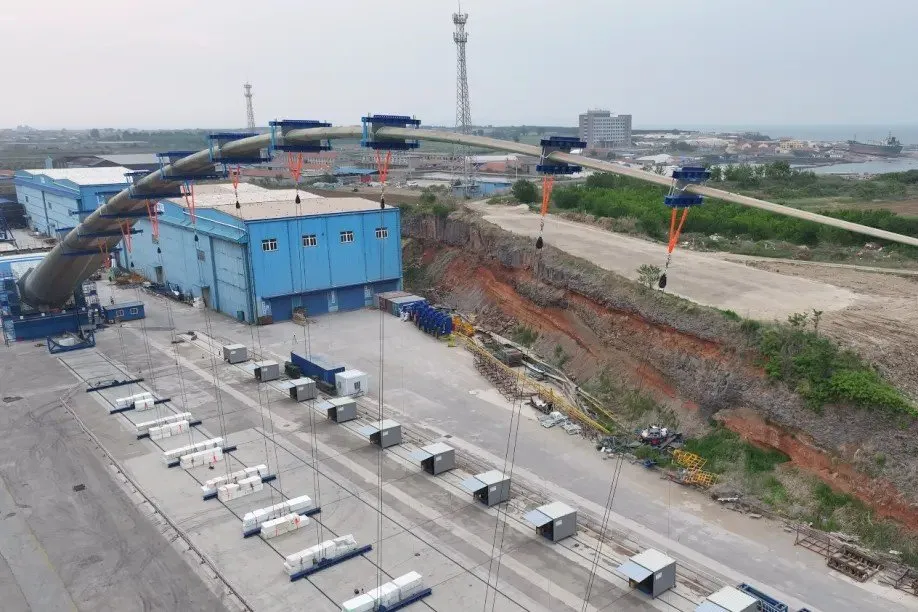Blades in 'uncharted territory' as world's most powerful turbine tested
Chinese turbine makers continue to power ahead in building supersized machines, despite concerns from experts over wind industry 'arms race'

Testing of a 150-metre blade for a 26MW offshore wind turbine that is the most powerful being developed globally has passed a key hurdle in China.
Chinese suppliers are currently dominating the race to build supersized turbines far larger than those being developed in the West.
This week, Dongfang announced it has passed another hurdle in developing that machine as it completed static load testing on the 150-metre blades that it will use.
Static load testing involves applying a constant and controlled load that simulates the strain blades will endure from the wind throughout their lifespan. It helps engineers assess the strength of the blade and how much it bends under pressure.
Data from the testing shows the blade complies with the IEC 61400-23 international standard, said Dongfang. The International Electrotechnical Commission (IEC) is an organisation that sets standards for various power technologies.
The blades will now enter fatigue testing, said Dongfang. This sees blades mounted to a rig where they are swung up and down to assess their resilience to real-world conditions.
The Dongfang turbine has previously been reported to have a rotor diameter of 310 metres, almost as long as the Eiffel Tower in Paris is tall.
Tim Camp, director of innovation at Offshore Wind Consultants, said: "The first response to seeing a blade of this scale must surely be 'Wow!'"
With its 185 metre hub height, Camp noted the turbine will have a tip height close to 340 metres – "taller than any building in Western Europe."
"Wind turbine blades of this scale push into uncharted territory in aerodynamic and structural design," he said. "The size of the rotor means that the blades pass through a significant portion of the earth’s boundary layer," the lowest part of the atmosphere, with mean wind speeds "typically 30% higher at the top of the rotor circle than the bottom."
This means "particular care" needs to be taken to avoid phenomena such as bending-torsion flutter, which can lead to the blade "flapping" and rapidly accumulating fatigue damage.
"Other significant challenges associated with blades of this scale include maintaining manufacturing quality control over such a large structure, and of course transportation and installation operations."
When it comes to supersized blades, Steve Gilkes, a turbine engineering consultant who previously spent almost a decade at Norway's DNV, said that longer blades are "not inherently more likely to fail."
"However, the designer must account for the fact that materials don't scale, so there must be greater numbers of reinforcement plies, thicker lines of adhesive, slower heat escape during curing, more extensive inspection."
(Copyright)